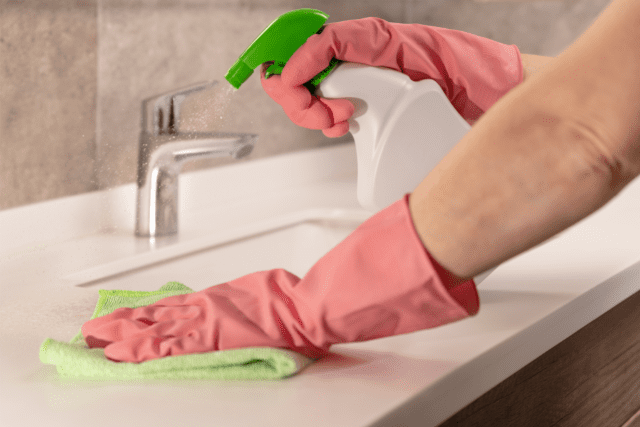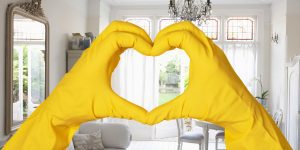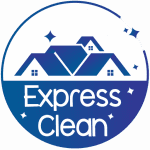Things to Clean After Being Sick: Best Practices, Materials & Safety
Recovering from an illness is not just about feeling better – it’s also the perfect time to focus on cleaning and disinfecting your environment. Both facility managers and homeowners in Chicago and its suburbs should know which items and surfaces to prioritize for cleaning after sickness to prevent re-infection and cross-contamination. This guide provides expert-backed steps, explains the best materials and chemistry for post-illness cleaning, and addresses safety & compliance and scheduling efficiency.
Why Post-Illness Cleaning Matters
Sickness can leave behind bacteria, viruses, and other pathogens on various surfaces. According to the Centers for Disease Control (CDC), effective cleaning and disinfecting are crucial in reducing the spread of infectious agents. It’s vital to address high-touch points from bedrooms to shared spaces in both residential and workplace settings.
Essential Areas to Clean After Someone Has Been Sick
- Doorknobs, Handles, and Switches: These are frequently touched and must be disinfected thoroughly.
- Bathroom Surfaces: Pay extra attention to faucets, toilet handles, counters, and light switches.
- Bedding and Linens: Wash all sheets, pillowcases, and towels in hot water (at least 140°F/60°C) with proper detergent.
- Electronics: Use disinfectant wipes approved for electronics on remotes, phones, and tablets.
- Shared Equipment: Clean keyboards, desks, drawer handles, and shared office equipment in facility settings.
- Reusable Masks & Soft Materials: Launder in the hottest water suitable for the fabric.
The Chemistry of Effective Clean-Up
Different pathogens require specific cleaning strategies. Not all cleaning products are created equal, so knowing about surface compatibility and chemical efficacy is key.
| Surface/Item | Recommended Product | Dwell Time | Material Compatibility |
|---|---|---|---|
| Hard, Non-Porous Surfaces | EPA-registered disinfectant | 4-10 min | Safe for most plastics & metals |
| Soft Surfaces | Laundry detergent + hot water | N/A | Color test before use |
| Electronics | Alcohol-based wipes (≥70% alcohol) | 30 sec | Avoid excess moisture |
Review CDC’s advice on home cleaning after illness for further product-specific tips and handling guidelines.
How to Clean Safely and Prevent Recontamination
- Wear proper PPE: Gloves and masks safeguard you against leftover germs and chemicals.
- Ventilate environments: Open windows or use exhaust fans to minimize chemical exposure.
- Use single-use cleaning cloths: Avoid spreading germs between surfaces; disposable or machine-washable cloths work best.
- Follow correct dwell times: Make sure disinfectants remain wet on surfaces for the required period to be effective.
- Dispose of waste responsibly: Bag up tissues and disposable PPE, tying securely before placing in the trash.
For a more scientific breakdown of how to clean and disinfect effectively, check the CDC cleaning and disinfecting resources.
Scheduling Efficiency for Facility Managers and Homeowners
Creating a logical cleaning flow can boost both speed and thoroughness:
- Start with the least-soiled areas (e.g., bedrooms, offices), moving towards dirtier zones (bathrooms, kitchens).
- Assign tasks based on skill and risk level; use checklists to ensure full coverage.
- For large facilities in Chicago and the suburbs, clean during off-hours to minimize close contact with others, enhancing safety.
Regularity is key. Consult our advice on cleaning frequency to reduce disease transmission risk.
Best Practices for Re-Entry
Even after cleaning, protocols matter:
- Wait at least two hours post-cleanup before reusing a recently cleaned and ventilated room.
- Wash hands thoroughly after cleaning tasks, especially before touching your face.
- Keep hand sanitizer accessible in all actively used spaces.
In case you’re looking for guidance on post-event or holiday cleaning, check our detailed guides.
Product Selection and Safety Compliance
Choosing the right product is more than about effectiveness; it’s also about safety. Evaluate pH compatibility for sensitive materials like marble or wood. Only use products as per their labeling, and always keep Material Safety Data Sheets (MSDS) on hand in facilities. For those considering environmentally friendly options, review safe green alternatives.
Common Pitfalls and How to Avoid Them
- Skipping high-touch points like appliance handles, remote controls, and handrails.
- Reusing contaminated cloths/sponges without hot water laundering between uses.
- Ignoring product labels and dwell times, reducing disinfectant effectiveness.
- Improper PPE handling: Always remove gloves and masks safely and wash hands afterward.
Related Reading & Resources
- How Cleaning Products Affect Your Lungs
- Why Room Tidiness Matters for Health
- Cleaning Children’s Playrooms
Need Professional Help?
If you need a trusted hand to book office cleaning in Chicago or schedule move-out cleaning, Express clean ensures compliance, safety, and efficiency for homes and facilities alike.
About the Author/Reviewer
Reviewed by: Express Clean Team
With over 20 years of experience in commercial and residential cleaning throughout Chicago, our team specializes in infection control, green cleaning products, and OSHA-compliant cleaning protocols for all environments.


24 Hour Cleaning Service in Chicago, cleaning toolkit, disinfect the environment, how to, properly, clean your pillows, 24 Hour Cleaning Service Chicago, Chicago 24 Hour Cleaning Service, Cleaning Company Chicago, Same Day Service in Evanston IL





